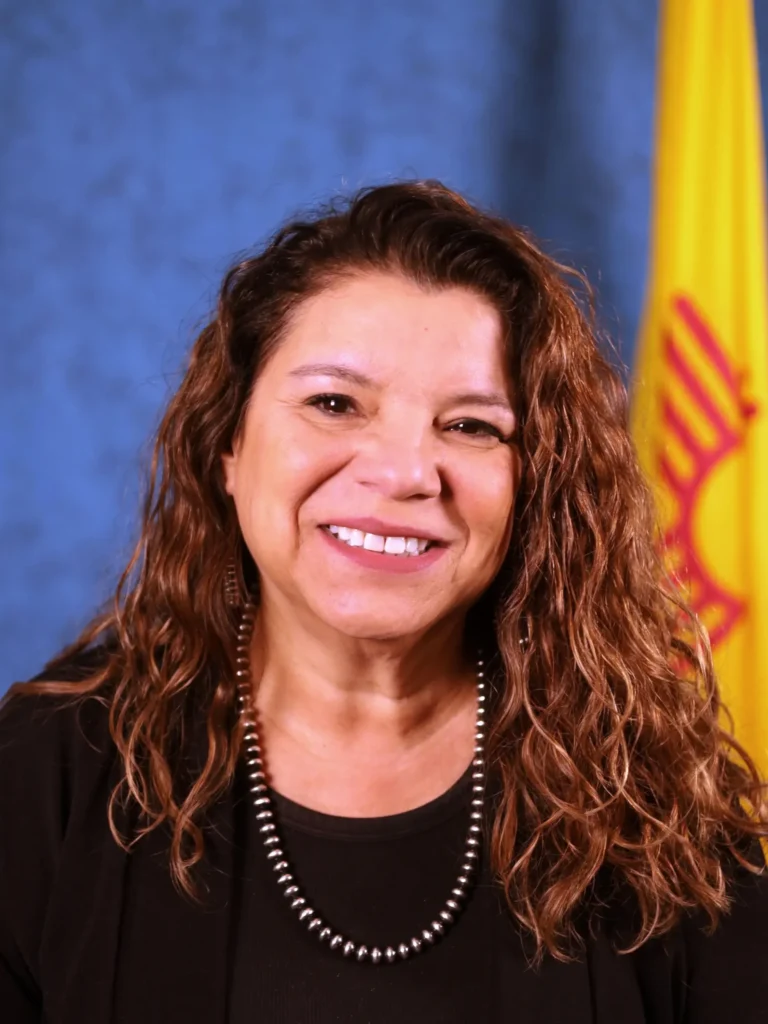Despite Presiding Over Low DOH Morale, Human Resources Leader “H.C.” Hawkins Got Two Pay Raises Totaling $22,035



The 2024, McKinsey & Company Study Measuring the Organizational Health Baseline of the Department of Health, Confirmed Serious Employee Morale Related Issues.
Importance of Honesty to the Mission of the New Mexico Department of Health
The New Mexico Legislature lays out a concise description of the role of the Department of Health in providing and monitoring the delivery of health services for the state’s residents.
In each of the General Appropriations Acts of the last ten years, the House and Senate wrote the following:
“The purpose of the public health program is to provide a coordinated system of community-based public health services focusing on disease prevention and health promotion to improve health status, reduce disparities and ensure timely access to quality, culturally competent healthcare.”
That language is more than just a “mission statement” on a brochure or press release created by wordsmiths in the Department of Health’s communications department.
Those words are in reality a statement of law.
And, along with other budget language, they provide an outline to the executive branch of government for the judicious and effective use of hundreds of millions of dollars in appropriated funding.
In order to properly meet its legal mission to the people of New Mexico, the Department of Health needs a strong, effective, educated, supported and fairly treated workforce.
But according to internal records and communications, the Department of Health (DOH), is failing to provide the support and fairly treat its employees.
In an email to the agency’s workforce, dated Monday, August 12, 2024, then DOH Secretary Patrick Allen informed the employees of the results of a $500,392 study, conducted by McKinsey & Company, to “measure the organizational health baseline of the Department.”
The results revealed an agency with significantly low morale – morale so low, that Allen wrote in the email,
- “… Our overall health score was a 40 which landed us in the bottom quartile for any public or private sector organization who has ever participated in the survey. I don’t think any of the leadership team members were surprised by the overall health score. I know I wasn’t.”
- “The overall scores portrayed an organization that has some specific, significant challenges related to Leadership, Accountability, Direction, Coordination and Control, External Orientation, Innovation and Learning, Capabilities, Work Environment and Motivation.”
- “Our lowest overall scores however, were in the areas of Financial Incentives and Rewards and Recognition. Financial incentives are tricky in the public sector, but I’ll talk more about that later in this message.”
Having an overall health score in the bottom quartile of an Organizational Health Index (OHI) survey is a bad sign for any organization, let alone a health agency.
And with McKinsey having conducted as many as 2,600 such surveys, Allen’s comment that DOH scored in “the bottom quartile for any public or private sector organization who has ever participated in the survey,” reveals just how much the agency needs to address its leadership failures over the past several years.
Allen shared that “the McKinsey Organization had one of their experts with the deepest knowledge in organizational health review our scores and paint a broad stroke of what it’s like to work at NMHealth.”
Below are quotes The Candle pulled from what the McKinsey expert wrote:
- “[P]eople at the organization have a strong connection to the work they are doing and have a deep sense of individual purpose around their work.”
- “However, they feel unsupported in their professional growth and the agency lacks flexibility for employees to change or adjust as their interests or goals evolve.”
- “Employees aren’t generally planning to leave the agency, but they aren’t likely to recommend working at the agency to their friends or families.“
- “Many employees expressed a lack of psychological safety, fearing criticism if they make a mistake or speak up with a new idea or suggestion that is different than others.”
- “A number of employees are burned out and only a small portion are feeling energized by their work.”
On November 20, 2024, barely three months after Allen sent his very revealing and honest email to the employees of DOH, Governor Michelle Lujan announce that he was “stepping down.”
The Governor offered no reason for Allen’s resignation.
Michelle Lujan Grisham has been Governor of New Mexico since January 1, 2019.
During the six years and eight and a half months of her administration, the Department of Health has had five Secretaries.
For a year and a half, the Department of Health had a de facto part-time Secretary, as Governor Michelle Lujan Grisham failed to fill that important leadership position between late July 2021 and December 30, 2022.
(NOTE: Kathyleen Kunkel (served eighteen months), Dr. Tracie Collins (served about eight months), David Scrase (as acting Secretary for eighteen months as he was serving as Secretary of the Human Services Department), Patrick Allen (served about twenty-three months), and Gina DeBlassie (who has served for the past eleven months).
[A copy of Secretary Allen’s email, a copy of a McKinsey/DOH document representing survey responses and the McKinsey assessment, as well as a copy of the McKinsey/DOH contract for $500,392 study can be found at the end of this reporting.]
Despite DOH’s Poor Grades in the McKinsey Study, Shortly After it Was Released, the Human Resource Boss Received a $22,000 Boost in His Salary.
According to the Department of Health’s Website:
“The New Mexico Department of Health Human Resources Bureau is an administrative unit that handles recruitment, classification and compensation, labor relations and benefits … NMDOH strives to provide a competitive, comprehensive compensation package that will attract and retain the very best.”
Human Resource leaders are the people who handle personnel issues.
Their performance and behavior to the workforce is a key indicator as to an organization’s commitment to building trust and strong workforce morale.
Fairness in wages and benefits are critical motivators for employees, and are also a component of the duties of an Human Resources leader.
Harry “HC” Hawkins is DOH Executive Manager of Human Resources.
He has worked at DOH for a long time – and apparently has a deep understanding of how the rules governing classification and pay works.
How is This Not Demoralizing to Coworkers at the Department of Health?
New Mexico state employees, with some exceptions, received a 4% pay raise on July 1, 2025.
For many state employees, including those at DOH, it was disheartening when the Governor and Legislature limited the annual pay raise to the 4%.
It has been hard for low paid workers to make ends meet.
For example, the highest annual increase for an already underpaid DOH worker (making less than a Living Wage of $21.01/hour) would be about $1,750 (about 84 cents an hour).
But they sucked it up understanding that all employees would be treated the same way.
That was not the case for the Department’s HR Executive Manager HC Hawkins.
Instead of waiting until July 2025 for his 4% raise (as most employees were required to do), which would have given him about a $6,126 annual raise, Hawkins managed an earlier raise sometime between October and November of 2024, of about 10%.
The October/November raise, increased his hourly wage from $73.63 to $80.99.
Annualized, that Autumn 24 Raise increased Hawkins’ pay by about $15,300 – from $153,150 to $168,459, annualized.
Then, about seven months later, in July of 2025, he was ready to add on the 4% raise provided for most of the rest of the state employees.
At the beginning of the new fiscal year, Hawkins annualized salary increased about $6,735, from $168,459 to about $175,197.
Hawkins Left His HR Colleagues at Other Agencies in the Dust When it Comes to Pay
His new salary is extraordinarily higher than his colleagues leading the Human Resources departments at the other five New Mexico agencies with the largest numbers of employees.
Hawkins bests his HR Director colleagues by $30,285 to $57,658 a year.
Take a look at the comparison:
| Name | Agency | Title | Number of Agency Employees (August 2025) | Annualized Salary as of September 2, 2025 |
| Harry Hawkins | Department of Health | Executive Manager, Human Resources | 2,626 | $175,198 |
| Dustin Andrew Acklin | Health Care Authority | Executive Manager, Human Resources | 1,995 | $144,913 |
| Ann T. Maes | Children, Youth & Families Department | Executive Manager, Human Resources | 1,770 | $139,464 |
| Arellano, R.L.Kiki | Department of Public Safety | Executive Manager, Human Resources | 1,126 | $132,496 |
| Monica Acevedo | Department of Transportation | HUMAN RESOURCE DIRECTOR II | 2,282 | $127,982 |
| Sharon E. Moreland | Corrections Department | Executive Manager, Human Resources | 1,846 | $117,540 |
Payroll Demographics of Workers at the New Mexico Department of Health
According to the New Mexico State Personnel Office records, there are about 2,626 employees currently working for the New Mexico Department of Health.
Then there are 13% (about 350 employees) making between $100,000 a year and $410,000 a year.
Allen’s replacement as DOH Secretary, Gina DeBlassie is paid about $228,000 a year and about nine doctors make between $250,000 and $410,000 a year.
About 21% (550 employees) of the total number of Department of Health (DOH) employees are paid between $15.69 per hour and $20.75 per hour, which is below a Living Wage.
These workers include,
- Associate Patient Care Assistants
- Food Service Workers
- Groundskeepers
- Laundry Service Workers
- WIC Office Support Clerks
- Custodians
- Recreational Therapy Aides
- Office Support Clerks
- Cooks
- Patient Care Assistants
- Associate CNA’s
That leaves about 1,726 DOH employees who make between $43,000 and $99,999 a year, and work in positions such as:
- Forensic Scientists
- Dental Hygienists
- Senior Social Worker
- Associate IT Systems Admins
- Senior Registered Nurses
- IT Application Developers
- Healthcare Programs Supervisors
- Senior Nutritionists
- Senior Health Educators
- Human Resources Generalists
- Sr Social Services Coordinators
The minimum Living Wage for New Mexico for a one individual is $21.00 per hour, (about $43,680 a year), according to the nationally recognized MIT Living Wage Calculator.

If you are a single parent with two children to support, the minimum living wage needed, is calculated to be $47.68, or $99,174 a year – note that there are about 2,276 DOH employees making under $99,999 a year.